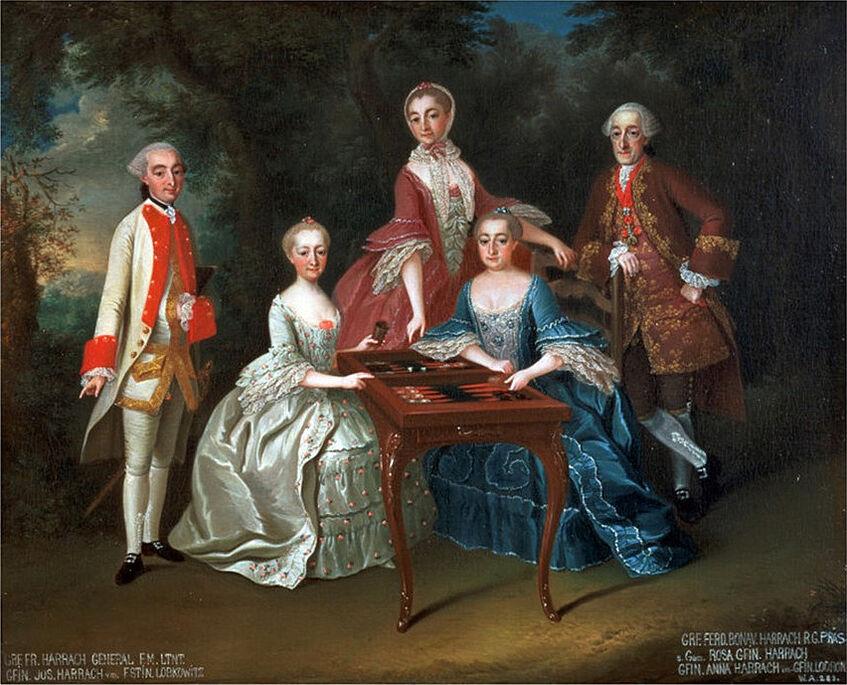Noble Siblings: Wealth Arrangements & Social Configurations

Principal investigator: Prof. Dr. Margareth Lanzinger
Project team members:
Florian Andretsch MA
Claudia Rapberger MA
Project duration: 2021-2024
Project number: FWF - P 34762-G

Familienportrait aus dem Geschlecht der Harrach, 1755. Abgebildet (v.l.n.r.) sind die Geschwister Franz Xaver von Harrach (1732-1781), Maria Josephina von Liechtenstein (1727-1788), Maria Rosa von Harrach (1721-1785) und Maria Anna von Lodron (1725-1780). Ganz rechts steht Ferdinand Bonaventura von Harrach (1708-1778), der Onkel väterlicherseits der vier Adeligen.
Bildnachweis: de.wikipedia.org/wiki/Harrach
In early modern times, connections and relationships to family members and relatives determined the social position as well as the opportunities of a given individual to a great extent. Family and kinship were particularly important within the aristocratic milieu. Noblemen and -women distributed wealth and power along lines of descent and marriage and often codetermined the life paths of fellow members of their "lineage" to a significant degree. Usually, children had to follow the plans of their parents or other high-ranking relatives. What was at stake was the succession of property, careers in clerical, diplomatic, and military offices or functions, as well as favorable marriage connections. Distinctions made on the basis of gender and birth order greatly impacted the distribution of such positions. But behind structural guidelines of this kind stood men and women with their own interests, desires and ideas that determined their actions.
Recent studies assume that the organization of families and kin groups within powerful and wealthy social classes changed fundamentally in the early modern period (ca. 1500-1800). Novel inheritance practices favoring the eldest son of a given family created new, more authoritarian family forms.The project investigates the structure of kinship relationships - especially between siblings - within a familial organisation that seems to have produced such significant inequalities between family members.
The research project analyzes the familial and kinship relations within the nobility of the Habsburg monarchy during this crucial period. The two Sub-Projects thus aim to provide a detailed and nuanced understanding of the inner workings of families and kin groups in times of radical change and to contribute to our understanding of how members of the Habsburg Empire's elite used connections formed by descent and marriage to monopolize positions of wealth and power. For this purpose, the project combines different research perspectives and utilizes a diverse corpus of sources. The study focuses on the four noble families Lamberg, Starhemberg, Trauttmansdorff and Harrach.
